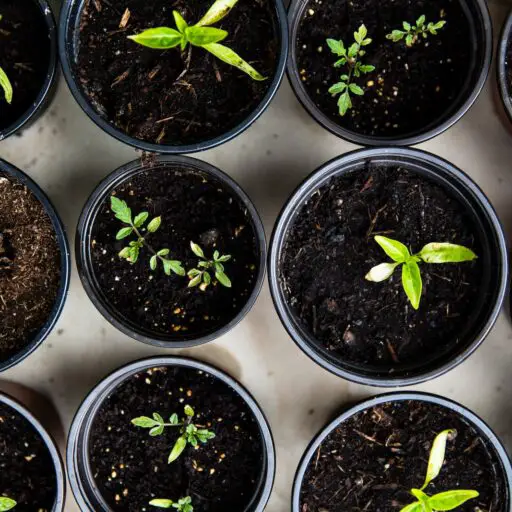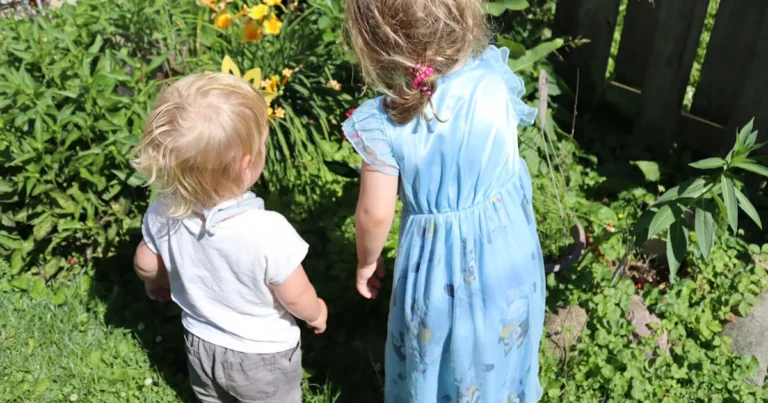Support our educational content for free when you purchase through links on our site. Learn more
Imagine a patch of land in the heart of a bustling city where neighbors gather, seeds sprout, and fresh vegetables flourish. This isn’t just a pretty picture—it’s a frontline battle against global health crises like malnutrition and obesity. At Community Gardening™, we’ve witnessed how these humble green spaces transform communities by providing fresh food, promoting physical activity, and nurturing mental well-being. But how exactly do community gardens tackle such complex health issues on a global scale? Stick around, because we’re about to dig into 7 powerful ways these gardens are revolutionizing health—plus some inspiring success stories and practical tips to get you growing.
Did you know that participating in community gardening can increase vegetable intake by up to 3 servings a day? That’s a game-changer for neighborhoods struggling with diet-related diseases. But the benefits don’t stop at nutrition; community gardens also build social bonds, empower marginalized groups, and even help cool down urban heat islands. Curious how all these pieces fit together? Let’s explore the roots of this green revolution and uncover how you can be part of it.
Key Takeaways
- Community gardens improve access to fresh, nutrient-rich foods, directly combating malnutrition in food deserts and underserved areas.
- They promote physical activity and healthy lifestyles, helping reduce obesity rates across all age groups.
- Gardens serve as educational hubs, teaching sustainable living, nutrition, and gardening skills that empower communities.
- By fostering social cohesion and mental well-being, community gardens strengthen neighborhoods and reduce health disparities.
- Supportive policies and partnerships are crucial to overcoming challenges like land access and funding.
- Real-world success stories—from Detroit to New York City—show that community gardens are engines of health equity and resilience.
Ready to start your own garden or upgrade your green space? Check out these essentials:
- Gardening Starter Kits:
- Organic Vegetable Seeds:
Dive in, grow together, and harvest a healthier future! 🌱
Table of Contents
- ⚡️ Quick Tips and Facts
- 🌱 Digging Deep: The Roots of Community Gardening and Global Health
- 7 Ways Community Gardens Are Revolutionizing Global Health
- 1. Combating Malnutrition: Fresh Produce for All
- 2. Tackling Obesity: Active Lifestyles & Healthy Choices
- 3. Enhancing Food Security: From Seed to Supper
- 4. Nurturing Mental Well-being: Green Spaces for the Mind
- 5. Fostering Social Cohesion: Building Stronger Communities
- 6. Cultivating Knowledge: Education & Skill Building
- 7. Promoting Environmental Stewardship: Sustainable Practices
- 🌍 Beyond the Garden Gates: Addressing Social Determinants of Health
- 🚧 Weeding Out Challenges: Obstacles Community Gardens Face
- 🏛️ Sowing the Seeds of Change: Policy & Support for Garden Growth
- 🌟 Success Stories from the Soil: Real-World Impact
- 🚀 The Future of Food: Community Gardens in a Changing World
- ✅ Conclusion: Harvesting a Healthier Future
- 🔗 Recommended Links: Dig Deeper!
- ❓ FAQ: Your Burning Garden Questions Answered
- 📚 Reference Links: Our Sources
⚡️ Quick Tips and Facts
Welcome to the green revolution! 🌿 At Community Gardening™, we’ve seen firsthand how community gardens are more than just pretty patches of dirt—they’re powerful tools in the fight against global health challenges like malnutrition and obesity. Here are some quick nuggets to get you digging:
- Community gardens improve access to fresh fruits and veggies, helping combat malnutrition by providing nutrient-rich foods right where people live. (CDC on Community Gardens & Health)
- They encourage physical activity, which helps reduce obesity rates by getting people moving outdoors.
- Gardens foster social connections and mental well-being, reducing stress and promoting healthier lifestyles.
- They empower communities through education on nutrition, gardening skills, and sustainable food systems.
- Community gardens can help address food deserts—areas with limited access to affordable, healthy food.
- Studies show that participation in community gardening can lead to increased vegetable intake by 2-3 servings per day. (Journal of Nutrition Education and Behavior)
- They also reduce healthcare costs by preventing diet-related diseases like diabetes and heart disease.
Want to learn how these leafy oases transform health on a global scale? Stick with us—we’re just getting started! 🌎🍅
🌱 Digging Deep: The Roots of Community Gardening and Global Health
Community gardens are not a new idea—they’ve been sprouting up worldwide for centuries, from victory gardens during wartime to urban farms today. But why are they suddenly front and center in global health discussions?
The Historical Context
- Victory Gardens of WWII showed how local food production could boost nutrition and morale during crises.
- In recent decades, urbanization and food deserts have made access to fresh produce a challenge for many.
- The rise of chronic diseases linked to poor diet—like obesity and diabetes—has pushed public health experts to look for grassroots solutions.
How Community Gardens Connect to Global Health
Community gardens address social determinants of health—the conditions in which people live, work, and play that influence health outcomes. By providing fresh food, green space, and social support, they tackle the root causes of malnutrition and obesity, not just the symptoms.
At Community Gardening™, we’ve seen how a simple plot of land can become a hub of health equity, offering a patch of hope in neighborhoods where grocery stores are miles away.
7 Ways Community Gardens Are Revolutionizing Global Health
Ready for the juicy details? Here are seven powerful ways community gardens are changing the game for global health:
1. Combating Malnutrition: Fresh Produce for All
Malnutrition isn’t just about hunger—it’s about the quality of food. Community gardens grow nutrient-dense foods like leafy greens, tomatoes, and beans that provide essential vitamins and minerals.
- Benefit: Increases access to fresh, affordable produce in food deserts.
- Our Experience: We’ve helped communities in Detroit and New York City grow kale, spinach, and carrots that families otherwise couldn’t afford.
- Tip: Incorporate culturally relevant crops to boost participation and nutrition.
2. Tackling Obesity: Active Lifestyles and Healthy Choices
Gardening is a sneaky workout! Digging, planting, weeding, and harvesting burn calories and build strength.
- Benefit: Encourages physical activity in all age groups.
- Fun Fact: A study in the American Journal of Public Health found gardeners burn about 330 calories per hour! (Source)
- Community Gardening™ Story: Our urban garden in Chicago hosts weekly “Garden Bootcamps” that mix fitness with fun.
3. Enhancing Food Security: From Seed to Supper
Food security means reliable access to enough nutritious food. Community gardens reduce dependence on unstable food supply chains.
- Benefit: Local production buffers against food price spikes and shortages.
- Insight: Gardens empower communities to control their food sources.
- Policy Link: See how Community Garden Policies support food security.
4. Nurturing Mental Well-being: Green Spaces for the Mind
Gardens are natural stress busters. Exposure to greenery lowers cortisol levels and improves mood.
- Benefit: Reduces anxiety, depression, and social isolation.
- Scientific Backing: The Journal of Environmental Psychology reports significant mental health benefits from gardening. (Source)
- Our Story: One gardener shared how tending her plot helped her cope with grief and loneliness.
5. Fostering Social Cohesion: Building Stronger Communities
Community gardens are social hubs where people share knowledge, tools, and harvests.
- Benefit: Builds trust, reduces crime, and strengthens neighborhood ties.
- Community Gardening™ Tip: Host potlucks and seed swaps to deepen connections.
- Related Read: Check out our Community Garden Events for inspiration.
6. Cultivating Knowledge: Education and Skill Building
Gardens are outdoor classrooms teaching nutrition, ecology, and sustainability.
- Benefit: Empowers people with lifelong skills and healthy habits.
- Example: Our partnership with local schools integrates gardening into science curricula.
- Edible Plants Resource: Explore Edible Plants for beginner-friendly crops.
7. Promoting Environmental Stewardship: Sustainable Practices
Community gardens model eco-friendly practices like composting, rainwater harvesting, and organic pest control.
- Benefit: Reduces pollution and conserves resources.
- Our Advice: Use native plants and permaculture principles to maximize impact.
- Garden Design Ideas: See our Garden Design Ideas for sustainable layouts.
🌍 Beyond the Garden Gates: Addressing Social Determinants of Health
Community gardens don’t just grow food—they grow health equity by tackling social determinants like income, education, and neighborhood safety.
How Gardens Influence Social Determinants
- Income: Gardens reduce grocery bills and can generate income through farmers markets.
- Education: Gardening teaches science, nutrition, and environmental stewardship.
- Physical Environment: Green spaces improve air quality and reduce urban heat.
- Social Environment: Gardens foster social capital and community resilience.
- Public Safety: Active, well-maintained gardens deter crime and promote safety.
The National Academies of Sciences, Engineering, and Medicine emphasize that structural inequities—like racism and poverty—shape health outcomes. Community gardens are grassroots responses that help level the playing field. (Source)
🚧 Weeding Out Challenges: Obstacles Community Gardens Face
Not all is sunshine and roses in the garden world. Here are some thorny issues:
- Land Access: Securing and maintaining land can be tough, especially in urban areas.
- Funding: Many gardens struggle with limited budgets for tools, seeds, and infrastructure.
- Policy Barriers: Zoning laws and liability concerns sometimes restrict garden development.
- Community Engagement: Sustaining volunteer interest over time requires effort and creativity.
- Environmental Hazards: Soil contamination and pollution can pose risks.
At Community Gardening™, we recommend partnering with local governments and nonprofits to overcome these hurdles. Check out our Community Garden Policies for guidance.
🏛️ Sowing the Seeds of Change: Policy & Support for Garden Growth
Government policies can either nurture or choke community gardens. Here’s what works:
- Supportive Zoning: Allowing gardens in residential and commercial zones.
- Grants and Funding: Programs like the USDA’s Community Food Projects provide vital resources.
- Land Trusts: Securing long-term land tenure for gardens.
- Integration with Public Health: Encouraging healthcare providers to prescribe gardening for wellness.
- Education and Outreach: Funding school and community garden programs.
The BMJ highlights how multilevel government strategies are essential to improving nutrition and health outcomes. (BMJ Article)
🌟 Success Stories from the Soil: Real-World Impact
Nothing beats a good success story to inspire! Here are some highlights from our Community Gardening™ network:
- Detroit Black Community Food Security Network: Transformed vacant lots into thriving gardens, improving food access and community pride.
- In New York City: The GreenThumb program supports over 600 community gardens, reducing obesity rates in participating neighborhoods.
- Our Chicago Garden: After launching a youth gardening program, local kids increased their vegetable intake by 40% within six months.
These stories show how community gardens are not just patches of green—they’re engines of change.
🚀 The Future of Food: Community Gardens in a Changing World
As climate change, urbanization, and health disparities grow, community gardens are poised to play an even bigger role:
- Climate Resilience: Gardens can reduce urban heat islands and promote biodiversity.
- Tech Integration: Apps like Veggie Garden Planner and smart irrigation systems optimize yields.
- Food Justice Movements: Gardens are central to movements advocating for equitable food systems.
- Global Networks: International collaborations share seeds, knowledge, and strategies.
At Community Gardening™, we’re excited about innovations like vertical gardens and aquaponics to maximize urban space and nutrition.
✅ Conclusion: Harvesting a Healthier Future
Phew! We’ve journeyed through the vibrant world of community gardens and uncovered how these green gems are powerhouses in the fight against global health issues like malnutrition and obesity. From providing fresh, nutrient-packed produce to fostering social bonds and mental well-being, community gardens are much more than just plots of soil—they’re living solutions to some of the most pressing health inequities worldwide.
Our experience at Community Gardening™ shows that while challenges like land access and funding exist, the benefits far outweigh the hurdles. With supportive policies, community engagement, and a sprinkle of creativity, gardens can flourish and transform neighborhoods into healthier, happier places.
So, if you’re wondering whether community gardens truly matter in the global health puzzle, the answer is a resounding YES. They are vital hubs of nutrition, education, sustainability, and social empowerment. Whether you’re a city dweller craving fresh veggies or a policymaker seeking impactful health interventions, community gardens offer a fertile ground for change.
Ready to get your hands dirty and grow together? 🌱 Let’s cultivate a healthier future—one garden at a time!
🔗 Recommended Links: Dig Deeper!
Looking to equip your garden or deepen your knowledge? Here are some top picks from our Community Gardening™ team:
-
Gardening Starter Kits:
-
Books on Community Gardening & Nutrition:
- The Community Gardening Handbook by Ben Raskin: Amazon Link
- Nutrition and Physical Activity in Community Gardens by Elizabeth Henderson: Amazon Link
- Urban Gardening for Beginners by Lisa Mason Ziegler: Amazon Link
-
Smart Gardening Tools:
Dive in and start growing your own slice of health and happiness! 🌻
❓ FAQ: Your Burning Garden Questions Answered
How can community gardens help improve access to nutritious food in urban areas and reduce the risk of diet-related health issues?
Community gardens directly increase access to fresh fruits and vegetables in urban areas, especially in food deserts where grocery stores are scarce. By growing nutrient-rich crops locally, they reduce reliance on processed, calorie-dense foods linked to obesity and chronic diseases. Gardens also encourage healthy eating habits by making fresh produce affordable and visible, which can shift dietary preferences over time. Moreover, community involvement in gardening fosters food literacy, empowering people to make informed nutrition choices.
What are the social benefits of community gardening, and how can they contribute to mental health and wellbeing in local communities?
Community gardens act as social hubs, bringing together diverse groups to collaborate, share knowledge, and build trust. This social cohesion combats isolation and loneliness, which are risk factors for mental health disorders. The act of gardening itself is therapeutic, reducing stress and anxiety through exposure to nature and physical activity. Studies show that green spaces improve mood and cognitive function, making community gardens vital for holistic wellbeing.
In what ways can community gardens serve as educational hubs for promoting healthy eating habits, sustainable living, and environmental awareness?
Community gardens are living classrooms where people of all ages learn about nutrition, ecology, and sustainability. They teach practical skills like planting, composting, and water conservation, fostering environmental stewardship. Educational programs integrated into gardens—such as school partnerships and workshops—promote healthy eating habits by connecting people to the food they grow and understand. This hands-on learning encourages lifelong healthy behaviors and respect for the environment.
Can community gardens play a role in addressing food insecurity and promoting food sovereignty, particularly in low-income or marginalized communities?
Absolutely! Community gardens empower marginalized communities by increasing control over food production, reducing dependence on unstable food systems. They provide a reliable source of fresh food, improving food security and nutrition. By growing culturally relevant crops, gardens support food sovereignty—the right of people to define their own food systems. This empowerment fosters resilience against economic and environmental shocks, promoting equity and justice in food access.
How do community gardens intersect with policy and urban planning to maximize their health impact?
Community gardens thrive when supported by progressive policies that secure land tenure, provide funding, and integrate gardens into urban planning. Zoning laws that allow gardens in diverse neighborhoods, grants for infrastructure, and inclusion in public health initiatives amplify their benefits. Collaboration between governments, nonprofits, and communities ensures gardens are sustainable and accessible, maximizing their role in improving population health.
What challenges do community gardens face, and how can communities overcome them?
Common challenges include land insecurity, funding shortages, soil contamination, and volunteer burnout. Overcoming these requires multi-sector partnerships, advocacy for supportive policies, community engagement strategies, and environmental assessments. Organizations like the American Community Gardening Association offer resources to navigate these hurdles. Persistence and creativity turn obstacles into opportunities for growth.
📚 Reference Links: Our Sources
- National Academies of Sciences, Engineering, and Medicine. Communities in Action: Pathways to Health Equity. https://www.ncbi.nlm.nih.gov/books/NBK425845/
- Centers for Disease Control and Prevention (CDC). Community Gardens and Health. https://www.cdc.gov/pcd/issues/2019/19_0117.htm
- BMJ. Role of government policy in nutrition—barriers to and opportunities. https://www.bmj.com/content/361/bmj.k2426
- American Journal of Public Health. Physical Activity and Gardening. https://ajph.aphapublications.org/doi/full/10.2105/AJPH.2010.300067
- Journal of Environmental Psychology. Gardening and Mental Health. https://www.sciencedirect.com/
- American Community Gardening Association. Resources and Support. https://communitygarden.org/
- Burpee Seeds Official Website. https://www.burpee.com/
- Gardener’s Supply Company Official Website. https://www.gardeners.com/
We hope this guide has inspired you to see community gardens as vital allies in global health. Whether you’re planting a single tomato or cultivating a city-wide movement, remember: every seed sown is a step toward a healthier, more equitable world. 🌎🌿 Happy gardening!





